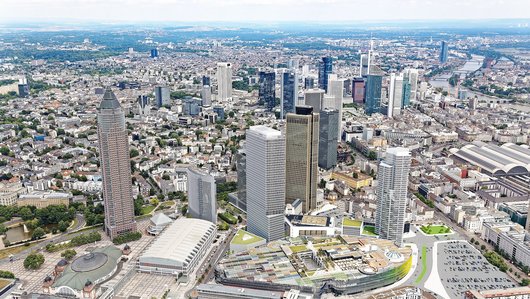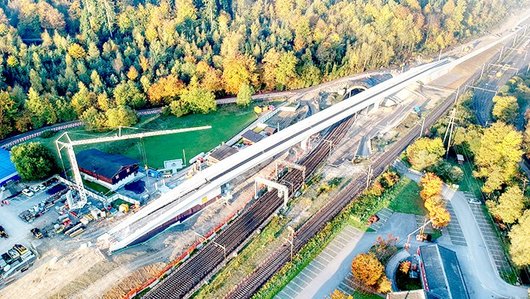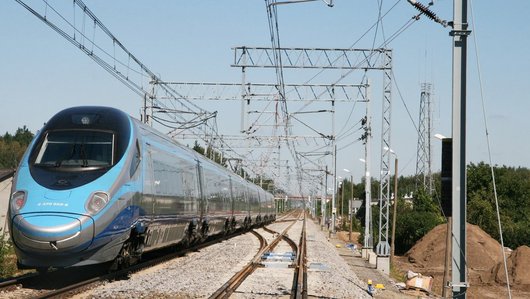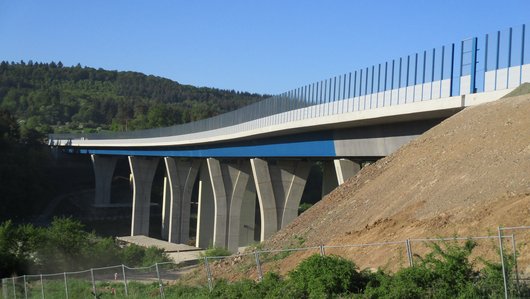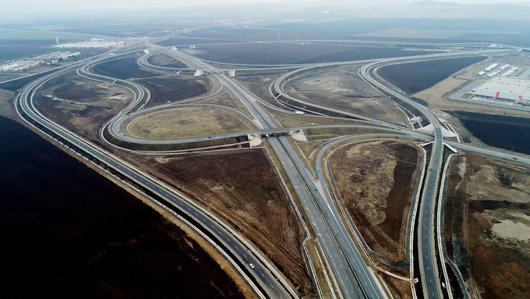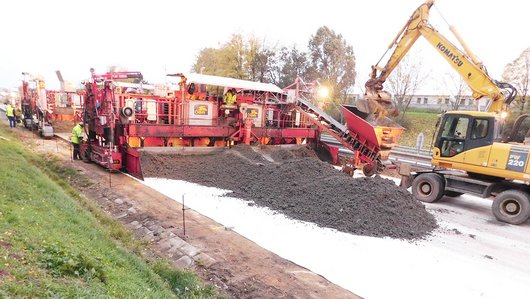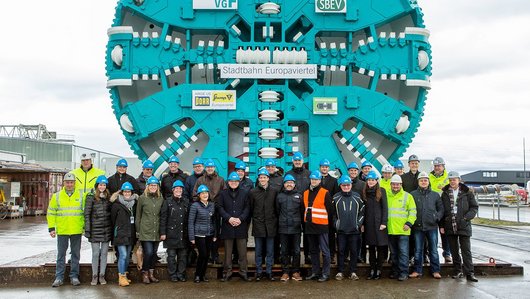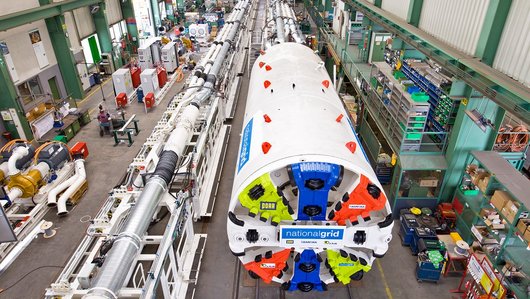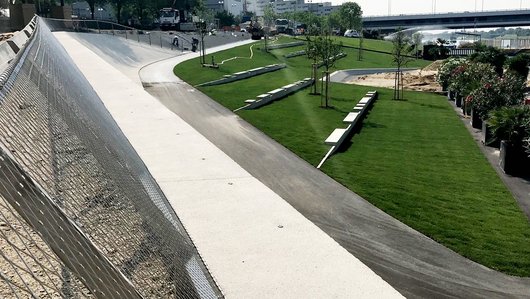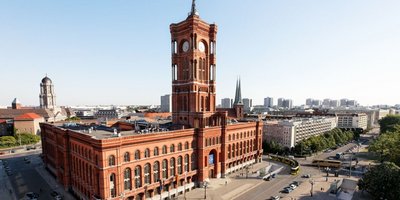
U5 “Gap Closure”, extending “Rotes Rathaus” station
As part of the project "Gap closure U5", PORR has renovated a section of four-track tunnel and extended the “Rotes Rathaus” U-Bahn station.
New transport links for central Berlin are being created through the U5 “Gap Closure” project, which extends the U5 underground line from Alexanderplatz to the Brandenburg Gate, where it will connect to the U55. The extensive tunnel renovations involved in the project put the team to the test, as they negotiated complex logistics and tackled the risk of cross-sections weakened by groundwater.
-
EmployerBVG vertreten durch die PRG U5
-
ContractorPORR GmbH & Co. KGaA, Ingenieurbau Berlin
-
ArchitectCollignon Architektur und Design GmbH (Ausbau Bahnhof)
-
Project typeInfrastructure . Building construction
-
Project scopeRenovating a four-track tunnel section and extending the neighbouring U-Bahn station
-
Order volumeEUR 21m
-
Construction start04/2016
-
Construction end12/2019
Overview
Berlin’s original plans for a fast underground east-west link separated from road traffic date back to 1920. The first part of the route was opened in 1930: a 7km stretch from Friedrichsfelde to Alexanderplatz. However, further building to the west was halted due to the Second World War and subsequent division of the city. When Berlin merged back together following German reunification, the city’s need for additional high-capacity local transport connections increased. The municipal government made the decision to revive the “U5 U-Bahn line” project, after a pause of nearly 70 years. PORR is involved in the “U5 Gap Closure” project, completing the missing link by extending the existing
U-Bahn line 5 from Alexanderplatz to the Brandenburg Gate, where it connects to the U55. PORR joined the project back in 2013, commissioned by Berlin’s main public transport company, Berliner Verkehrsbetriebe, or BVG: between 2013 and 2016, we built the construction pit, the connection to the century-old existing infrastructure, and the carcass for the future “Rotes Rathaus” station. In April 2016, PORR was awarded the follow-on contract for general renovation of the four-track U-Bahn tunnel beneath Rathausstrasse; in February 2017 PORR also won the next contract, to extend the three-storey station “Rotes Rathaus” U-Bahn station.
Tunnel renovation
The tunnel structure is around 15m wide, with heights varying from 4.70m to 8.90m, and 350m long. The top edge in this section is located approximately 3.5m below street level. This means that the structure is almost entirely surrounded by groundwater. The construction comprises side walls reinforced with steel girders, a steel and concrete floor slab, and a “Prussian vaulted” ceiling with reinforced concrete infill, longitudinal girders and central columns. The Prussian vault is a roof construction with repeating barrel vault segments. The particular challenges in the project were managing the complex logistics and preventing buoyancy uplift due to the groundwater, as this would result in weak areas in the cross-section.
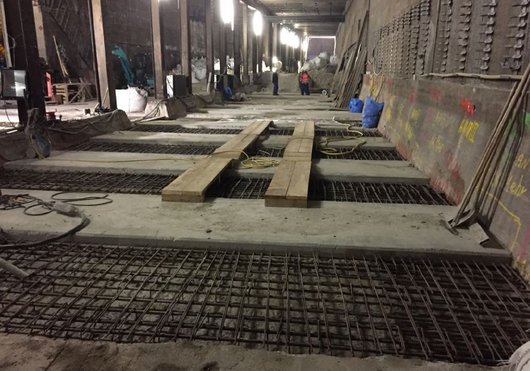

We built two covered logistics shafts with crane access, which we used to deliver the heavy machinery and materials for the tunnel renovation.
Tunnel core removal
Some parts of the tunnels in the city centre were still in operation. In order to remain independent of the operative parts of the U-Bahn while delivering the heavy machinery and material – around 2,300t of ballast, 2,500t sand and 1,600m track – PORR erected two covered logistics shafts with crane access. We also established a physical separation from the operating U-Bahn areas, using a system designed in-house based on easy to relocate, dustproof longitudinal separating walls with a capacity of 2,700m².
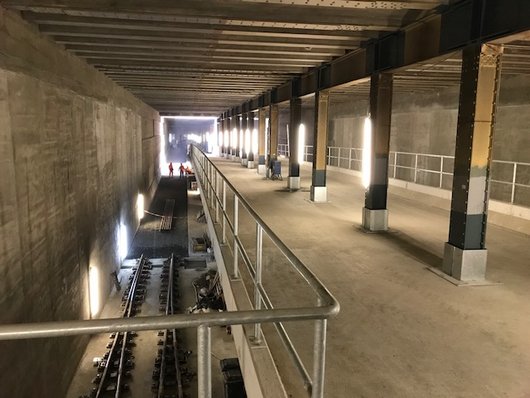

Tunnel core removal reduces the overall weight and disrupts the statics. The lower weight, combined with the tunnel’s location in groundwater, results in a risk of buoyancy uplift in the tunnel structure. This creates weaknesses in the cross-section, where there is a danger of cracks and water penetration. In order to reduce this risk, PORR used controlled ballast weights in the tunnel sections and used pressure-controlled presses for installing new or additional columns. The renovation was carried out using a back-and-forth process over 1.5m sections, and monitored carefully with survey measurements. Around 3,000t of loose, porous concrete layers were chipped off the walls and floors; the surfaces were milled and cracks were grouted. PORR renovated or reinforced corroded steel girders in the walls, in order to strengthen the tunnel for the required cross-sections and the next decades. The team also anchored the new surface reinforcement and reprofiled the surface areas with jetcrete.
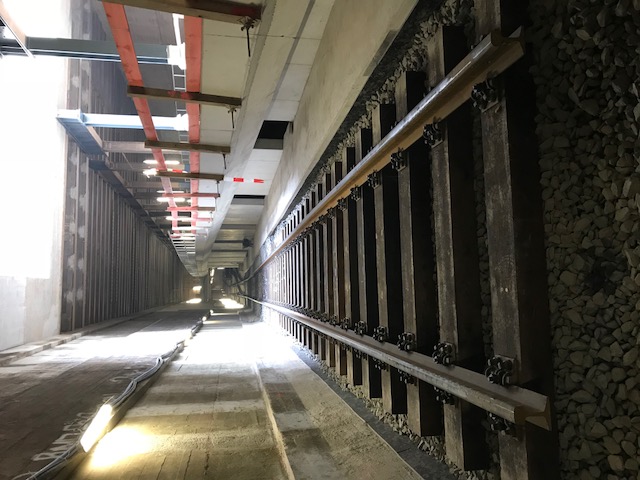

Once the work on the tunnel floors and walls had been successfully completed, the team built a 130m long ramp structure where the tracks will branch to enter the two storeys of the new “Rotes Rathaus” U-Bahn station. Once this was ready, the team laid 2,000m of track and installed 14 switches on track ballast mats; in April 2019, PORR was able to hand over the 350m tunnel section to the client.
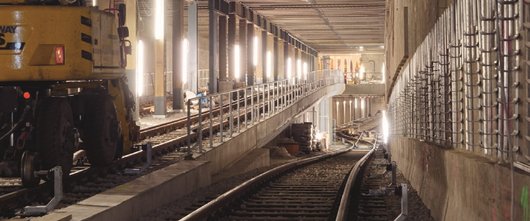

Station extension
Next, just slightly behind schedule, PORR began work on the extension to the “Rotes Rathaus” station in the neighbouring construction section. The new station, designed by architects Collignon Architektur und Design, stands out with unusual mushroom-capped columns and an eye-catching pattern of light and dark terrazzo tiles on the walls. The glazed mezzanine levels create a transparent effect, linking the top two public levels.
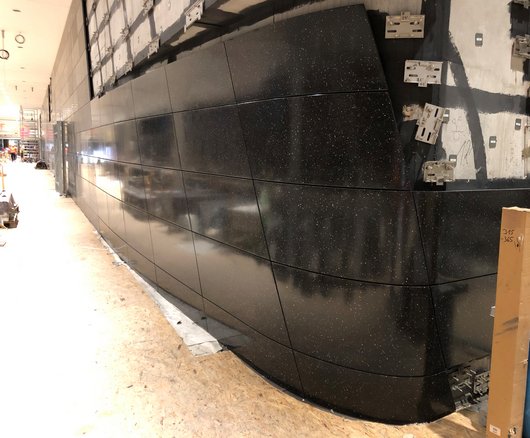

The majority of the terrazzo slabs used in the station are unique. Every slab was allocated an exact position in the station, rather like a multi-dimensional jigsaw.
The 7,500m² extension includes both public and restricted areas of the station on storeys -1 to -3. The work involved traditional disciplines such as glazing, carpentry, metal construction, plastering and tiling, in parallel with work on technical systems for the lifts, ventilation, building automation, plumbing, fire protection and U-Bahn operation.
PORR used suspended concrete slab façades to clad the walls in the station’s public zone in levels 0, -1, -2. The slabs are made of 3cm thick high-strength concrete with glass fibre reinforcement, and follow the complex carcass geometry, with the walls curving in concave and convex elliptic forms. The vertically inclined joints are coloured white and anthracite to match the colouring of the cast terrazzo floor. PORR made and installed 3,500 façade slabs, each weighing approximately 75kg, almost every one unique and allocated to an exact position in the station – rather like a multi-dimensional jigsaw.
The team designed and visualised the façade in 3D, modelling every slab, every connection, and the inclined joint patterns. The data from the 3D model was also used for computer-controlled production of the parallelogram slabs, with their low tolerances. Using the computer system, each one of the elliptic wall slabs was produced individually, then processed into shape with a CNC milling machine, which was also used to mill and impregnate the surfaces. The “Rotes Rathaus” U-Bahn station will be handed over shortly. The new track section will be operative from early December 2020, creating a new U-Bahn connection in central Berlin.
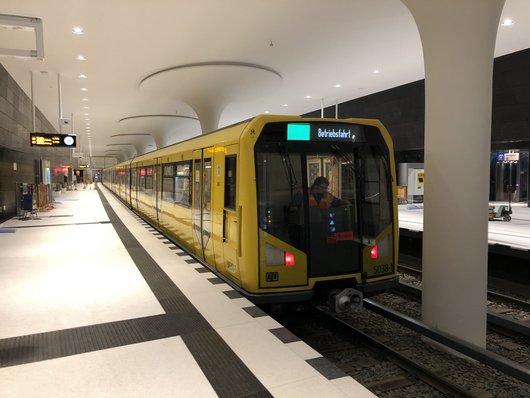

Technical data
-
Clearance height8.9m
-
Renovated wall and ceiling girders93t
-
Repaired floor and wall area2,600m² with approx. 94,000 rebars
-
Jetcrete surfaces850 m²
-
Track construction2,000m + 14 switches
-
Inclined glazing120m²
-
Lifts2
-
Escalators7
-
Hinged gate systems3

